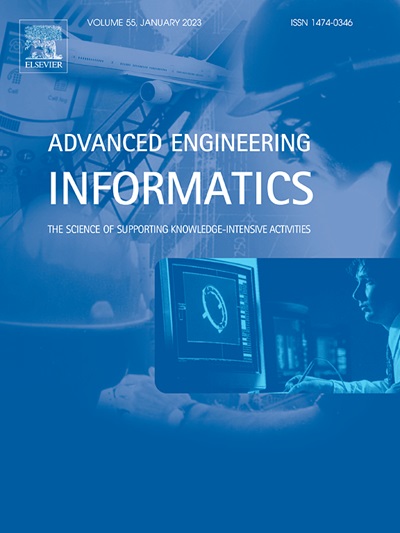Integrated registration and utility of mobile AR Human-Machine collaborative assembly in rail transit
IF 8
1区 工程技术
Q1 COMPUTER SCIENCE, ARTIFICIAL INTELLIGENCE
引用次数: 0
Abstract
In the Industry 5.0 and digital transformation stage, with human–machine collaboration at the core, an AR human–machine collaboration system can be used to enhance the perception ability of business personnel towards assembly interaction scenarios and objects, effectively improving the efficiency and quality of assembly. However, existing research on the effectiveness of AR human–machine collaborative assembly in more open and flexible rail transit scenarios is uncertain and limited. This article studies the integrated registration and utility of mobile AR human–machine collaborative assembly in rail transit. By proposing a mobile AR End-to-end Integrated Registration Network AR-EIRNet, which is based on AR assembly objects multiscale feure detection, pose inference optimization, and virtual-real fusion rendering, the virtual-real fusion registration application of rail transit AR human–machine collaborative assembly is realized, and then conduct in-depth analysis of AR-EIRNet performance based on RGB-synthesized enhanced images of rail transit, and the effectiveness of AR human–machine collaborative assembly is comprehensively and deeply evaluated via the virtual-real interaction behaviour of the ZD6 switch machine and a subjective questionnaire survey. The experimental results show that in open and complex rail transit scenarios, the registration accuracy of AR-EIRNet reaches 80%, and the assembly time and error count are reduced by 38% and 43% respectively, demonstrating AR-EIRNet has strong robustness and generalizability. AR handheld are more in line with operating habits, but the lack of immersion and interactive experience limits the significant improvement in complex assembly effects. AR glasses with multimodal perception can increase the cognitive load, but moderate cognitive pressure and multimodal interaction are beneficial for stimulating autonomous assembly motivation. The organic combination of two types of AR interactions can effectively meet the practical needs of adaptive, refined, and efficient AR human–machine collaborative digital assembly operations in open and complex rail transit scenarios.
轨道交通中移动 AR 人机协作装配的综合注册和实用性
本文章由计算机程序翻译,如有差异,请以英文原文为准。
求助全文
约1分钟内获得全文
求助全文
来源期刊

Advanced Engineering Informatics
工程技术-工程:综合
CiteScore
12.40
自引率
18.20%
发文量
292
审稿时长
45 days
期刊介绍:
Advanced Engineering Informatics is an international Journal that solicits research papers with an emphasis on 'knowledge' and 'engineering applications'. The Journal seeks original papers that report progress in applying methods of engineering informatics. These papers should have engineering relevance and help provide a scientific base for more reliable, spontaneous, and creative engineering decision-making. Additionally, papers should demonstrate the science of supporting knowledge-intensive engineering tasks and validate the generality, power, and scalability of new methods through rigorous evaluation, preferably both qualitatively and quantitatively. Abstracting and indexing for Advanced Engineering Informatics include Science Citation Index Expanded, Scopus and INSPEC.
 求助内容:
求助内容: 应助结果提醒方式:
应助结果提醒方式:


